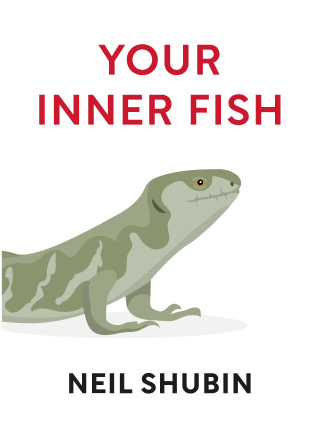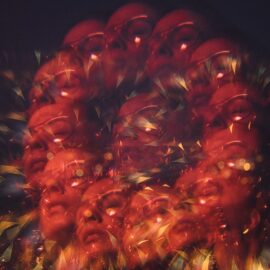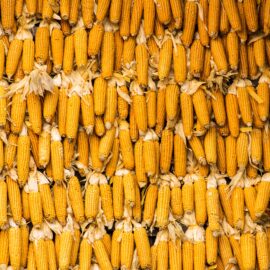

This article is an excerpt from the Shortform book guide to "Your Inner Fish" by Neil Shubin. Shortform has the world's best summaries and analyses of books you should be reading.
Like this article? Sign up for a free trial here .
Is there an evolution of life on Earth timeline? Can it explain where humans came from?
This evolution of life on Earth timeline can help outline the different phases of early life on Earth. It also shows the relationships those lifeforms have with humans.
Keep reading for an evolution of life on Earth timeline and what it means.
Evolution of Life on Earth: Timeline of the Human Body
Now that we know the materials and mechanisms that make bodies possible, the next challenge is identifying the first bodies to employ the mechanisms of cell attachment and communication. It turns out you can find connecting molecules in the most primitive bodies and even in life forms lacking bodies: microbes. Read about the Evolution of life on Earth timeline.
Placozoans
We didn’t always know the history of life on Earth’s timeline. In the 1880s, employees at an aquarium found a live blob, now known as a placozoan, on the glass of a fish tank. It’s a creature even simpler than some of the fossil impressions of disks and plates found in Australia in the 1940s.
A placozoan has a plate-shaped body with only four types of cells. Though simple, it has features of a body: division of labor among cells (movement, digestion), rivet connections, and communication ability. Keep reading for the next steps in the evolution of life on Earth timeline.
Sponges
An even more primitive example of an early body is a sponge, which has cells that communicate and function as a whole, division of labor, and also collagen with molecular rivets. This is a very interesting part of the history of life on Earth’s timeline.
The body of a sponge is actually a non-living structure of silica or calcium carbonate with collagen interspersed. Sponges have two kinds of collagens, compared to 21 in humans.
A sponge’s cells are clues to the origin of bodies. The inside of a sponge is a space divided into compartments. Cells shaped like goblets direct water through the sponge, using flagellum that they wave in tandem. Goblets also use tiny arms to catch food in the water, which other cells process. Other cells can contract and change the sponge’s shape in response to changing water currents.
The way a sponge functions, with different cells having different tasks, is a primitive version of the way cells divide labor in the human body. This is an important part of the timeline of life on Earth.
Microbes
Placozoans and sponges have an even more primitive relative, a single-celled microbe called a choanoflagellate that has features connecting it to creatures with bodies and ultimately to humans in the timeline of life on Earth.
Choanoflagellates look similar to the goblet cells in sponges—but while they look somewhat like primitive sponges, their DNA is actually more similar to microbes, making them a link between single-celled microbes and organisms with bodies like sponges.
Further, they have molecules that could be used for cell adhesion or communication. Microbes that specialize in invading other cells also have primitive versions of collagen and proteoglycan.
Why Did Bodies Come About?
As microbes were the only life forms in the first 3.5 billion years of Earth’s history, the potential to build bodies was there long before bodies actually appeared. There are several theories for why bodies appeared in the first place in the evolution of life on Earth timeline.
One theory in the timeline of life on Earth is that microbes learned to band together to avoid being eaten by bigger microbes. Perhaps they transformed the molecules they used to catch and hold onto prey into molecules that make cells stick together.
Researchers did an experiment to test this predator explanation for body formation. They grew a batch of single-celled algae, then introduced a predator that ate single-celled microbes. The algae clumped together, eventually settling into eight-cell groups, large enough to avoid capture, but small enough that each cell could absorb enough light to survive. A simple multicellular organism thus formed from a single-celled organism lacking a body.
If predators explain why bodies appeared, it also raises the question of what took them so long to develop. The answer may be that it couldn’t happen until the environment provided the amount of oxygen the microbes needed to produce collagen molecules. There was a spike in oxygen levels about a billion years ago that may have been the trigger for microbes to begin forming bodies in the history of life on Earth timeline.
In summary, the answers to the key questions of how bodies developed are:
- When: 600 million years ago.
- How: Cells stuck together through molecular rivets and communicated by sending molecular messengers.
- Why: Bodies allowed microbes to enlarge themselves to avoid predators.
This evolution of life on Earth timeline can help you understand early life.

———End of Preview———
Like what you just read? Read the rest of the world's best book summary and analysis of Neil Shubin's "Your Inner Fish" at Shortform .
Here's what you'll find in our full Your Inner Fish summary :
- How your hands and feet are like a fish that lived hundreds of millions of years ago
- How the structure of your head can be traced back to an ancient, headless worms
- What parts of your body are uniquely human






